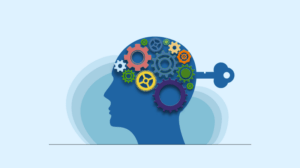Obsessive-Compulsive Disorder (OCD) is a complex mental health condition characterized by uncontrollable, recurring thoughts (obsessions) and behaviors (compulsions) that the sufferer feels compelled to repeat. It can significantly disrupt daily life and relationships. However, there is hope. This blog explores how CBT treatment for OCD works, delving into its techniques and benefits, and guiding the beginning of this therapeutic journey.
Contents
Is CBT Successful For OCD?
 Numerous studies have shown that CBT treatment for OCD, especially when incorporating techniques such as Exposure and Response Prevention (ERP), significantly reduces the intensity and frequency of OCD symptoms. The success rate of CBT for OCD varies, with many patients experiencing substantial improvement.
Numerous studies have shown that CBT treatment for OCD, especially when incorporating techniques such as Exposure and Response Prevention (ERP), significantly reduces the intensity and frequency of OCD symptoms. The success rate of CBT for OCD varies, with many patients experiencing substantial improvement.
Over time, this leads to a decrease in the severity of obsessions and compulsions. Hence, enhancing overall functioning and quality of life. However, the effectiveness can depend on several factors, including the severity of the disorder, the specific nature of the obsessions and compulsions, the patient’s commitment to treatment, and the skill of the therapist. While many patients show significant improvement, some may only experience partial relief or require ongoing therapy to manage symptoms.
What Is The CBT Model For OCD?
The CBT model for treating Obsessive-Compulsive Disorder (OCD) is based on the understanding that the disorder is fueled by interconnected cognitive and behavioral components—namely, obsessions (intrusive, distressing thoughts or images) and compulsions (repetitive behaviors performed to alleviate the distress caused by obsessions). Here’s a detailed look at how the CBT model addresses OCD:
Identification of Obsessions and Compulsions
- Understanding the Cycle: CBT starts with identifying specific obsessions and the resultant compulsions. Patients are taught to recognize how their compulsions are attempts to neutralize or mitigate the anxiety or discomfort caused by their obsessions.
- Mapping Thoughts and Behaviors: Therapists help patients trace the patterns of their thoughts and the behaviors that follow, establishing a clear connection between the two.
Cognitive Restructuring

- Challenging Irrational Thoughts: Patients learn to challenge the validity of obsessive thoughts by examining the evidence for and against the thoughts’ accuracy. This helps in understanding that these obsessions are not necessarily true reflections of reality.
- Reframing the Mindset: By learning to change their responses to obsessive thoughts, patients can reduce the anxiety these thoughts produce without resorting to compulsive behaviors.
Exposure and Response Prevention (ERP)
- Exposure: This involves gradually exposing the patient to the thoughts, images, objects, or situations that trigger their OCD, in a controlled and safe environment. This helps to desensitize the individual to the triggers.
- Response Prevention: Simultaneously, the patient is encouraged to refrain from engaging in the compulsive behavior normally performed in response to the exposure. This teaches the patient to tolerate the discomfort and anxiety without resorting to compulsions, thereby breaking the cycle.
Skills Training
- Mindfulness and Relaxation Techniques: These are often incorporated into CBT to help manage the anxiety and stress associated with exposure, aiding patients in remaining present and engaged during the process without overwhelming distress.
- Behavioral Experiments: Patients test the validity of their obsessive fears in real-life experiments, which often disproves the exaggerated nature of the feared consequences.
Relapse Prevention
- Maintenance Strategies: Patients learn strategies to maintain their progress and manage symptoms post-therapy.
- Education on Triggers and Symptoms: Continuous education about recognizing early signs of relapse. Effectively managing triggers ensures long-term management of OCD.
CBT treatment for OCD is a structured, time-limited therapy that focuses on specific goals and outcomes, usually requiring active participation from the patient. This model is empirically supported. And is considered one of the most effective treatments for reducing the symptoms of OCD.
What Is The Best CBT Treatment For OCD?
The best CBT treatment for OCD is typically considered to be Exposure and Response Prevention (ERP). ERP is a specific type of CBT that has been extensively researched. Also, shown to be highly effective for a significant number of individuals suffering from OCD. Here’s how it works:
- Exposure
ERP involves exposing the patient to thoughts, images, objects, or situations that trigger anxiety and obsessive thoughts. The exposure is done in a controlled and systematic manner. There, the therapist helps the patient confront their fears without engaging in any compulsive behaviors to neutralize or stop the anxiety.
- Response Prevention
Alongside exposure, the patient is taught to resist the urge to perform compulsive behaviors after exposure to anxiety-inducing stimuli. The goal is to learn to tolerate the discomfort and anxiety. Then, to recognize that it will naturally decrease over time without the need for compulsions.
This treatment helps break the cycle of obsessions and compulsions by teaching the brain that the feared outcomes are unlikely to occur. Also, they can be handled without needing to perform compulsive rituals. ERP requires a high degree of commitment and effort from the patient. It involves facing one’s fears directly, which can be initially distressing.
How Can I Practice CBT At Home For OCD?
 Practicing CBT at home for OCD can be a valuable part of treatment, especially if used as a supplement to professional therapy. Here are some steps and strategies that can help you:
Practicing CBT at home for OCD can be a valuable part of treatment, especially if used as a supplement to professional therapy. Here are some steps and strategies that can help you:
Educate Yourself About OCD and CBT
Understanding the nature of OCD and the principles of CBT is crucial. Consider reading books or reputable online resources to learn more about how OCD operates and how CBT can help.
Self-Monitoring
Journaling: Keep a daily journal to record obsessive thoughts and the compulsions you feel urged to perform. Note the situations that trigger your OCD, your feelings, and how you respond. This can help you identify patterns and triggers.
Gradual Exposure: Start by exposing yourself to triggers that cause less anxiety, gradually working up to more challenging ones. For example, if checking locks is a compulsion, you might start by delaying the checking for a few minutes at a time.
Resist Compulsions: Try to delay or avoid performing the compulsive behavior. Begin with manageable intervals and gradually increase the delay or abstention period as you become more comfortable with the anxiety.
Cognitive Restructuring
Identify Distorted Thoughts: Use your journal to help identify and challenge irrational beliefs that fuel your obsessions.
Challenge Thoughts: Ask yourself questions like, “What evidence do I have that this thought is true? What is the worst that could happen, and how could I cope if it did?”
Establish a Routine
Creating a structured schedule for when you practice these techniques can help enhance their effectiveness. Hence, make them a regular part of your coping strategy.
Use Mobile Apps and Online Resources
There are CBT-oriented apps designed to help manage OCD. And offering tools for tracking symptoms, providing tips for handling obsessions and compulsions, and guiding relaxation exercises.
Seek Support
Join online forums or support groups where you can share experiences, learn from others, and get encouragement. Knowing you’re not alone can be very comforting.
Evaluate Progress and Set Goals
Regularly review your journal and notes to assess progress. Set small, achievable goals to motivate continuous improvement.
Practicing CBT at home requires discipline and perseverance. And it’s important to be patient with yourself through this process. While self-help CBT strategies can be effective, they are usually most beneficial as a supplement to professional therapy. Especially in moderate to severe cases of OCD.
Conclusion
In conclusion, Cognitive Behavioral Therapy (CBT), particularly through techniques like Exposure and Response Prevention (ERP), offers a promising path for those struggling with OCD. Understanding the relationship between your thoughts and behaviors, challenging irrational beliefs, and systematically confronting your fears can significantly alleviate the symptoms.
Remember, for the best results, consider complementing your self-help efforts with guidance from a professional therapist tailored to your individual needs. OCD is a mental health disorder characterized by obsessions and compulsions. If you have any queries regarding Online OCD Counseling experienced therapists at MantraCare can help: Book a trial OCD therapy session


